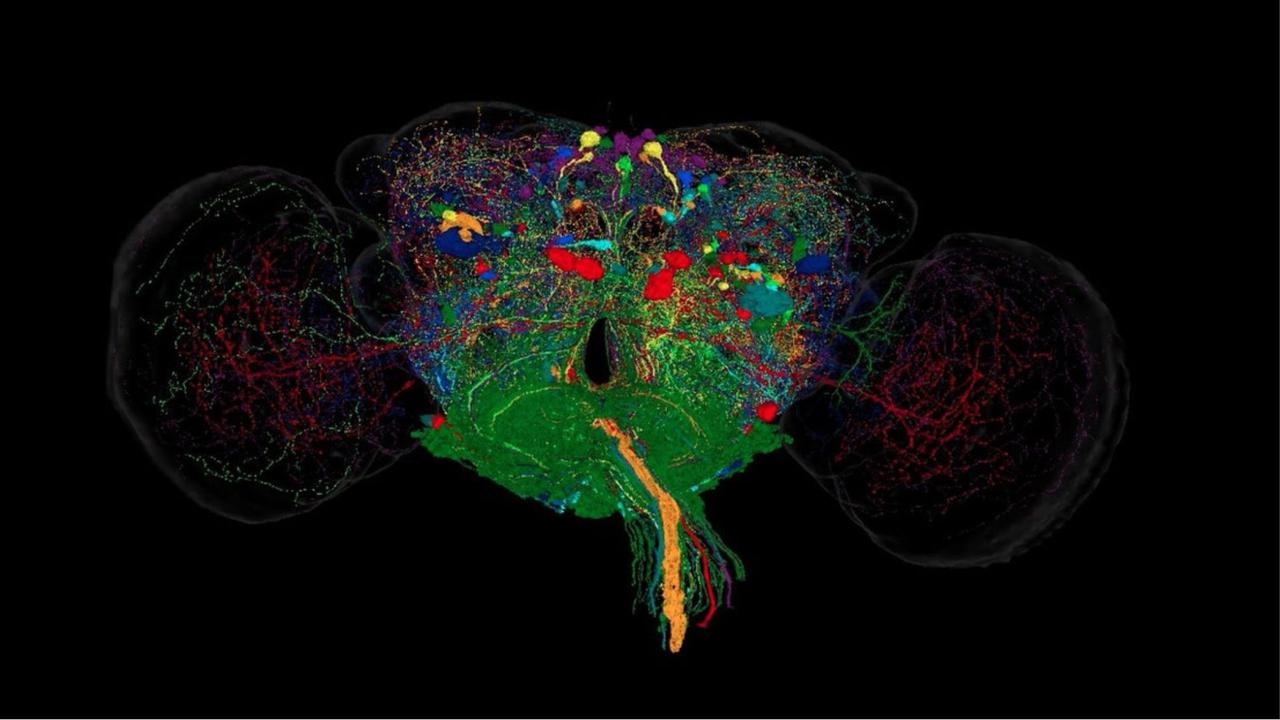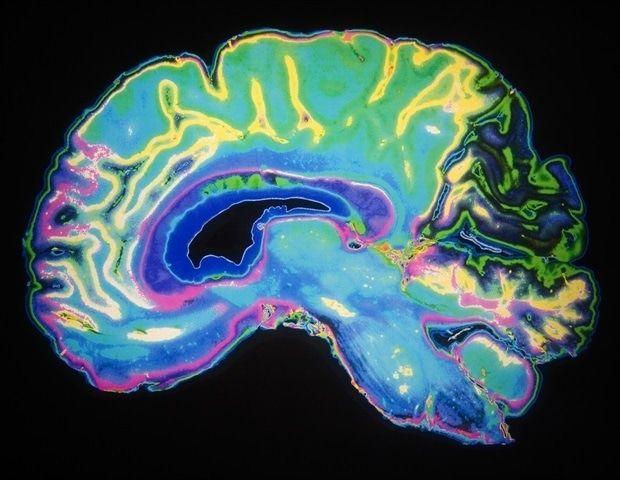Microorganisms Swim Without Brains: Implications for AI and Nanobot Design
3 Sources
3 Sources
[1]
How to swim without a brain
Bacteria can do it, amoebas can do it, even blood cells can do it: they all have the ability to move in a goal oriented way in liquids. And they do so despite having extremely simple structures without a central control system (such as a brain). How can this be explained? A team from TU Wien, the University of Vienna and Tufts University (USA) simulated this type of movement on a computer and was able to show that swimming movements are possible even without a central control unit. This not only explains the behaviour of microorganisms, it could also enable nanobots to move in a targeted manner, for example to transport drugs to the right place in the body. "Simple microorganisms can be imagined as being composed of several parts, a bit like a string of pearls," says Benedikt Hartl from the Institute of Theoretical Physics at TU Wien and the Allen Discovery Center at Tufts University, lead author of the current publication. "The individual parts can move relative to each other. We wanted to know: under what circumstances does this result in a movement that causes the entire organism to move in a desired direction?" This is relatively simple if there is a central control system -- something like a brain or at least a nerve centre. Such a centre can issue specific commands to the individual parts. It is easy to understand how this can result in coordinated movement. But a single-celled organism naturally has no nerve cells, no central processing system that could issue commands. How is it possible in this case for a coordinated swimming movement to arise? If the individual parts of the microorganism all behave according to very simple rules, can this result in collective behaviour that leads to efficient swimming? Microorganisms simulated on a computer This question was investigated using computer simulations: the microorganisms were modelled as chains of interconnected beads . Each of these beads can exert a force to the left or right, but each bead only knows the position of its immediate neighbours. There is no knowledge of the overall state of the organism or of beads further away. "The crucial question now is: Is there a control system, a set of simple rules, a behavioural strategy that each bead can follow individually so that a collective swimming motion emerges -- without any central control unit?" says Benedikt Hartl. On the computer, the individual beads -- the simulated parts of the virtual microorganism -- were equipped with a very simple form of artificial intelligence, a tiny neural network with only 20 to 50 parameters, explains Hartl: "The term neural network is perhaps somewhat misleading in this context; of course, a single-celled organism has no neurons. But such simple control systems can be implemented within a cell, for example, by means of very simple physical-chemical circuits that cause a specific area of the microorganism to perform a specific movement." This simple decentralized control system has now been adapted to the computer in search of the most efficient 'control code' possible that produces the best swimming behaviour. With each version of this control system, the virtual microorganism was allowed to swim in a simulated viscous fluid. "We were able to show that this extremely simple approach is sufficient to produce highly robust swimming behaviour," says Benedikt Hartl. "Although our system has no central control and each segment of the virtual microorganism behaves according to very simple rules, the overall result is complex behaviour that is sufficient for efficient locomotion." Biology and technology This result is not only interesting because it explains the complex behaviour of very simple biological systems, it could also be interesting for artificially produced nanobots: "This means that it would also be possible to create artificial structures that could perform complex tasks with very simple programming," says Andreas Zöttl (University of Vienna). "It would be conceivable, for example, to build nanobots that actively search for oil pollution in water and help to remove it. Or even medical nanobots that move autonomously to specific locations in the body to release a drug in a targeted manner."
[2]
How microorganisms without a complex nervous system swim in liquids
Bacteria can do it, amoebas can do it, even blood cells can do it: They all have the ability to move in a goal-oriented way in liquids. And they do so despite having extremely simple structures without a central control system (such as a brain). How can this be explained? A team from TU Wien, the University of Vienna, and Tufts University (U.S.) simulated this type of movement on a computer and were able to show that swimming movements are possible even without a central control unit. This not only explains the behavior of microorganisms, it could also enable nanobots to move in a targeted manner, for example to transport drugs to the right place in the body. Success even without a central control system "Simple microorganisms can be imagined as being composed of several parts, a bit like a string of pearls," says Benedikt Hartl from the Institute of Theoretical Physics at TU Wien and the Allen Discovery Center at Tufts University, lead author of the current study published in Communications Physics. "The individual parts can move relative to each other. We wanted to know under what circumstances does this result in a movement that causes the entire organism to move in a desired direction?" This is relatively simple if there is a central control system -- something like a brain or at least a nerve center. Such a center can issue specific commands to the individual parts. It is easy to understand how this can result in coordinated movement. But a single-celled organism naturally has no nerve cells, no central processing system that could issue commands. How is it possible in this case for a coordinated swimming movement to arise? If the individual parts of the microorganism all behave according to very simple rules, can this result in collective behavior that leads to efficient swimming? Microorganisms simulated on a computer This question was investigated using computer simulations: the microorganisms were modeled as chains of interconnected beads. Each of these beads can exert a force to the left or right, but each bead only knows the position of its immediate neighbors. There is no knowledge of the overall state of the organism or of beads further away. "The crucial question now is: Is there a control system, a set of simple rules, a behavioral strategy that each bead can follow individually so that a collective swimming motion emerges -- without any central control unit?" says Hartl. On the computer, the individual beads -- the simulated parts of the virtual microorganism -- were equipped with a very simple form of artificial intelligence, a tiny neural network with only 20 to 50 parameters, explains Hartl. "The term neural network is perhaps somewhat misleading in this context; of course, a single-celled organism has no neurons. "But such simple control systems can be implemented within a cell, for example, by means of very simple physical-chemical circuits that cause a specific area of the microorganism to perform a specific movement." This simple decentralized control system has now been adapted to the computer in search of the most efficient "control code" possible that produces the best swimming behavior. With each version of this control system, the virtual microorganism was allowed to swim in a simulated viscous fluid. "We were able to show that this extremely simple approach is sufficient to produce highly robust swimming behavior," says Hartl. "Although our system has no central control and each segment of the virtual microorganism behaves according to very simple rules, the overall result is complex behavior that is sufficient for efficient locomotion." Biology and technology This result is not only interesting because it explains the complex behavior of very simple biological systems, it could also be interesting for artificially produced nanobots. "This means that it would also be possible to create artificial structures that could perform complex tasks with very simple programming," says Andreas Zöttl (University of Vienna). "It would be conceivable, for example, to build nanobots that actively search for oil pollution in water and help to remove it. Or even medical nanobots that move autonomously to specific locations in the body to release a drug in a targeted manner."
[3]
How microorganisms swim without a brain and why it matters - Earth.com
Picture a microorganism swimming through a liquid. It moves with purpose, but it has no brain, no nerves. How does it know where to go? How does it move at all? A team of researchers from TU Wien, the University of Vienna, and Tufts University decided to tackle these questions. They simulated microorganisms on a computer to understand how they move without having centralized control. The findings reveal something surprising: even without a brain or any central control, microorganisms can still swim efficiently. This behavior isn't just interesting from a biological standpoint - it could also lead to more effective designs for nanobots that navigate through fluids to deliver drugs or clean up pollutants. Bacteria, amoebas, and even blood cells move without central control. Yet, they navigate effectively through fluids. The researchers wanted to know how. Benedikt Hartl, from TU Wien and Tufts University, explained the concept using a simple analogy. "Simple microorganisms can be imagined as being composed of several parts, a bit like a string of pearls," he said. Each part can move relative to the next, but there is no overall command center issuing orders. The research team created virtual microorganisms made up of interconnected beads. Each bead could exert a force to the left or right. But here's the catch: each bead only knew the position of its immediate neighbors. It had no idea what the rest of the body was doing. Despite this, the beads still managed to coordinate their movements to swim effectively. Why bother with decentralized control? Why not just give these microorganisms a virtual brain? The researchers argue that single-celled organisms don't have brains, so it made sense to simulate movement without one. They wanted to see if simple rules could still produce coordinated movements. "Is there a control system, a set of simple rules, a behavioral strategy that each bead can follow individually so that a collective swimming motion emerges - without any central control unit?" Hartl questioned. Turns out, there is. The beads don't need a central controller. Instead, they rely on simple, localized rules. If each bead reacts only to its immediate neighbors, a kind of collective intelligence emerges. The beads work together without knowing it. The researchers simulated these movements using a basic neural network. Each bead acted like a tiny agent with its own controller. The neural network had 20 to 50 parameters - not much in the world of artificial intelligence. Still, it was enough to produce coordinated swimming behaviors. On the computer screen, the virtual microorganisms swam through simulated viscous fluids. They didn't just move randomly. They propelled themselves in specific directions, responding to simulated forces. The most intriguing part was that they were swimming with purpose without any central control. The researchers didn't just program these beads to swim. They let them learn how to swim. They used neuroevolution - a process that mimics natural selection. In each iteration, the virtual microorganisms tried different swimming strategies. The best ones survived, while the less efficient ones were eliminated. With each new generation, the swimmers got better at moving through fluids. They became more coordinated and more efficient. They developed swimming gaits that propelled them forward with surprising speed and precision. As the simulations progressed, a pattern emerged. Larger microorganisms tended to adopt long-wavelength body deformations. Instead of twitching back and forth, they generated sweeping, wave-like movements. These long-wavelength movements proved to be the most efficient. Andreas Zöttl from the University of Vienna saw potential beyond biology. If microorganisms could swim using such simple rules, so could nanobots. Imagine a swarm of nanobots moving through the bloodstream, delivering drugs directly to cancer cells. With decentralized control, each nanobot could operate independently, yet still contribute to the overall mission. The researchers didn't stop at swimming. They wanted to know if these decentralized controllers could handle cargo. They loaded the virtual microorganisms with additional beads - representing cargo - and watched what happened. Despite the added weight, the swimmers kept moving. They didn't need any adjustments to their control systems. The same simple rules that allowed them to swim also enabled them to transport cargo. As the cargo got heavier, the swimmers slowed down. But they kept moving. The researchers pushed the virtual swimmers further. What if a few beads stopped working? What if some connections got severed? Even then, the swimmers kept going. The decentralized control system was remarkably robust. If one bead failed, the others adapted. If a connection broke, the swimmers still moved. This kind of resilience is rare in centralized systems. But in decentralized systems, it's almost a given. The researchers didn't just stick to small models. They scaled up to 100 beads. Would the same rules work? Could the microorganisms still swim without central control? Yes. In fact, the larger swimmers performed even better. They generated longer, smoother waves. They moved more efficiently without any additional programming. The same set of rules that worked for a three-bead swimmer also worked for a 100-bead swimmer. The virtual swimmers didn't just learn to swim. They also learned to adapt. The researchers varied the simulated environment. They added obstacles, changed the viscosity of the fluid, and introduced new challenges. The swimmers adapted without any reprogramming. Their controllers adjusted to the new conditions. This adaptability hints at the power of decentralized systems. They don't just follow orders. They learn and evolve. The implications extend far beyond microorganisms. Zöttl envisioned nanobots that could replicate these movements. Imagine a swarm of nanobots in polluted water, seeking out oil droplets and breaking them down. Or consider medical nanobots that navigate through the bloodstream, releasing drugs at specific locations. These nanobots wouldn't need complex programming. They'd just follow simple rules - the same rules that let microorganisms swim without a brain. This study challenges the assumption that complex movement requires complex control systems. Instead, the researchers showed that simple, decentralized rules can produce surprisingly coordinated behaviors. The implications for nanotechnology are significant. Autonomous nanobots could swim without central control systems, like microorganisms, thus reducing computational costs and increasing resilience. And by learning from nature, engineers could develop systems that adapt, evolve, and keep moving - even when some parts fail. Like what you read? Subscribe to our newsletter for engaging articles, exclusive content, and the latest updates.
Share
Share
Copy Link
Researchers simulate microorganisms' swimming behavior without central control, revealing insights for AI and nanobot development.

Simulating Microorganism Movement Without Central Control
Researchers from TU Wien, the University of Vienna, and Tufts University have made a groundbreaking discovery in understanding how simple microorganisms navigate liquids without a central nervous system. The team, led by Benedikt Hartl, used computer simulations to model microorganisms as chains of interconnected beads, each capable of exerting force but only aware of its immediate neighbors' positions
1
.The Power of Decentralized Control
The study revealed that efficient swimming behavior could emerge from extremely simple, decentralized control systems. Each simulated bead was equipped with a tiny neural network containing only 20 to 50 parameters, mimicking basic physical-chemical circuits within a cell
2
."We were able to show that this extremely simple approach is sufficient to produce highly robust swimming behavior," Hartl explained. Despite the lack of central control, the overall result was complex behavior sufficient for efficient locomotion
1
.Evolutionary Approach to Swimming Strategies
The researchers employed neuroevolution, a process mimicking natural selection, to optimize swimming strategies. Virtual microorganisms tried different approaches, with the most efficient ones surviving and improving over generations
3
.Scalability and Adaptability
Remarkably, the same simple rules that governed small-scale models also applied effectively to larger simulations with up to 100 beads. The virtual swimmers demonstrated adaptability to various environmental changes, including obstacles and fluid viscosity variations, without reprogramming
3
.Related Stories
Implications for Nanobot Technology
This research has significant implications beyond biology. Andreas Zöttl from the University of Vienna highlighted the potential for creating artificial structures capable of performing complex tasks with simple programming
2
."It would be conceivable to build nanobots that actively search for oil pollution in water and help to remove it. Or even medical nanobots that move autonomously to specific locations in the body to release a drug in a targeted manner," Zöttl explained
1
.Robustness and Cargo Transport
The simulated microorganisms demonstrated remarkable robustness, continuing to function even when some components failed or connections were severed. They also successfully transported cargo, adapting to additional weight without requiring adjustments to their control systems
3
.This groundbreaking research not only sheds light on the complex behavior of simple biological systems but also opens up new possibilities for the development of efficient, resilient, and adaptable nanobots for various applications in medicine and environmental cleanup.
References
Summarized by
Navi
[1]
Related Stories
Breakthrough in Robotics: Electricity-Free Circuits Enable More Advanced AI Integration
10 Oct 2024•Technology

EPFL Researchers Look to Fruit Fly Brains for Next-Gen Robot Controllers
05 Apr 2025•Science and Research

AI-Powered Framework Decodes Cellular Organization Rules for Bioengineering Breakthroughs
22 Aug 2025•Science and Research

Recent Highlights
1
OpenAI releases GPT-5.2 AI model after code red memo targets Google's Gemini 3 threat
Technology

2
Disney invests $1 billion in OpenAI, licenses 200+ characters for Sora video generator
Technology

3
Disney accuses Google of massive copyright infringement through AI-generated character images
Policy and Regulation





